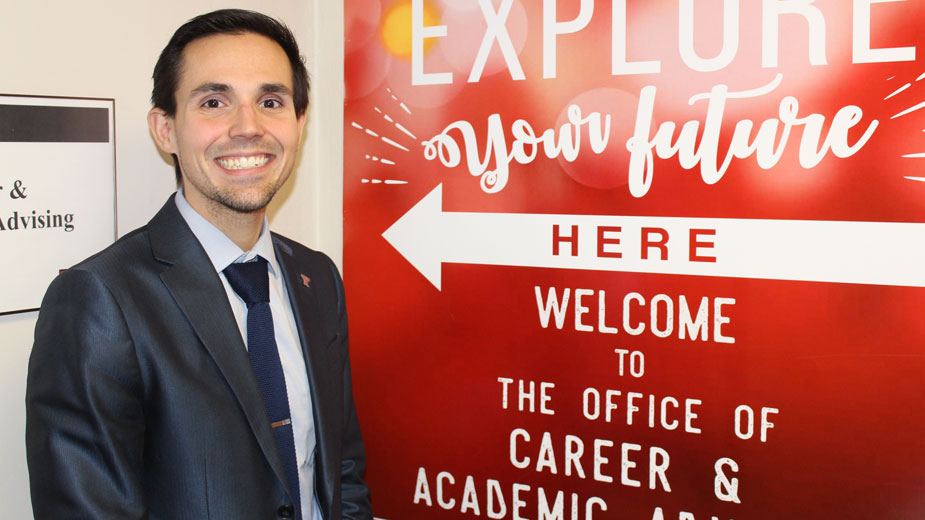Most YSU Grads Still Here After 6 Months
YOUNGSTOWN, Ohio — Six months after earning a baccalaureate, 67% of 2018 Youngstown State University graduates found career-related employment or pursued higher education, according to a report from its Office of Career & Academic Advising.
The snapshot from 1,006 respondents of 2,236 graduates also shows that 69% stayed within 30 miles of Youngstown, while 17% moved 30 or more miles outside the city and 14% relocated to another state. Students enrolled in graduate studies are included in the percentage of respondents staying within 30 miles of Youngstown.
While the percentage of entry-level jobs in the region is high, retention is problematic, according to Justin Edwards, director of the Office Career and Academic Advising.
“What I see is that alumni who are returning are having a harder time finding midlevel jobs despite having a robust resume and strong experience,” Edwards says. “We know statistically that Ohio is a net exporter. We train well in the first five to 10 years, but we need to be as competitive as possible and we need to do more.”
Results of the graduate-outcome report are compiled from a First Destination Survey by the National Association of Colleges and Employers, which is designed to track career outcomes six months following graduation, Edwards says.
“The National Association of Colleges and Employers suggests six months is appropriate for a first-destination survey as to what people want in the state and program accreditation,” he says.
“But six months is not as important for national benchmarks and for expanded programming.”

Edwards is exploring the feasibility for another round of surveys to be distributed one year beyond graduation. “The university would benefit overall from that type of data,” he says. “But at this point we just don’t have it.”
Based on the number of respondents from the 2017-2018 academic year, graduates of the Williamson College of Business Administration recorded a 92% career outcome rate followed by 78% for those in graduate school. Career outcome percentages for other colleges are:
- Bitonte College of Health and Human Services, 69%.
- College of Science, Technology, Engineering and Math (STEM), 65%.
- College of Liberal Arts & Sciences, 61%.
- Cliffe College of Creative Arts & Communication, 37%.
- Beeghly College of Education, 17%.
Of the 2,236 graduates, 555 are from health and human services, 510 graduate school, 426 STEM, 264 liberal arts and social science, 227 business administration, 137 education and 117 creative arts and communication.
The college of business, which has the highest number of graduates employed, has its own Center for Career Management under the direction of Christina O’Connell. The center tracks trends and career outcomes outside of the First Destination survey.
O’Connell says assistance is provided for students from the time they enter as freshmen through graduation. The business alumni are also supported through the center.
Statistics for 2018-2019 from the center show that 155 of 183, or 84.7%, of business graduates are employed, in graduate school, or not seeking employment. O’Connell says not seeking employment means that person had a job already lined up, is working in a family-owned company or doesn’t currently need a job but wanted to get a degree.
Students who completed an internship had higher rates of success for employment. Of 121 students with internships, 114, or 94.2% are employed or in graduate school. The rate of students with no internship being employed dropped to 66.1%, or 41 of 62 students.
“There are jobs locally and a good majority will stay in the Mahoning Valley region, especially right out of college. Many are from the Mahoning Valley and are family oriented and wish to stay around family,” O’Connell says.
A high number of graduates are employed locally, according to O’Connell. The highest number of students employed or in graduate school are in Mahoning County with 48%, followed by 6.3% in Trumbull County, 3.5% in Columbiana County, 2.8% in Mercer County, Pa., and 1.4% in Lawrence County, Pa. Allegheny County, Pa., has 4.2% of local graduates employed.
There were 5% of graduates who relocated to Florida, Illinois, New York, North Carolina or South Carolina. Another 2.1% are working in Saudi Arabia, Hungary or England.
Statistics show that nearly 100 regional businesses employ business graduates, ranging from banking, finance, utility companies, transportation, manufacturing and even Walt Disney World.
O’Connell reports the college had 203 paid internships and three stipend internships at nonprofit agencies. The average hourly rate for internships is $13.04. Nearly half of the students who complete an internship with a company are hired full time.
She says that 66% of business students are completing at least one internship, which has increased 35% from when she started six years ago.
Students can take two paid internships for credit. For students to receive credit for an internship, it must be paid and also approved by a chairman in the business college.
O’Connell says that graduates initially stay in the area six months to a year, but tend to move on once they get additional experience. She says about 20% of students will switch jobs.
Remaining with a company 25 to 30 years is a dying tradition. “Switching jobs is more of a trend with this generation of graduates,” she says. “Statistics nationally show they will switch jobs 10 to 15 times in their careers.”
Employers are adjusting to the generation known as millennials, born between 1981 and 1996, according to O’Connell.
“Employers I’ve spoken with and research I’m seeing at the career center show employers are hoping for two to five years of employment,” she says. “They want the knowledge they can gain from that person because they are bringing their own ideas. For some it doesn’t work out and for some they provide a lot of opportunities and they stay.”
Early research on Generation Z, students who are 18 to 19, and just coming into college, indicates they may stay with one company. “It’s hard to tell at this point until they get into the workforce,” O’Connell says.
Edwards agrees that more young graduates are career mobile, but he believes companies have a better chance of retaining young professionals by offering opportunities to learn and expand their skill sets rather than keeping them in one position.
And he believes opportunities to help keep young professionals in the region and attract professionals are gaining momentum. He points to the viability of entrepreneurial opportunities and the national reputation of the Youngstown Business Incubator as well as startups at the Common Wealth Kitchen Incubator.
“We need to start to build curriculums that best fit their needs,” Edwards says.
He adds that beautification initiatives and revitalization efforts that improve quality of life are helping reframe downtown Youngstown, which is important to young professionals.
“We’re headed in the right direction, but we need to figure out how we can engage more people to see Youngstown in a positive light, especially through arts and culture,” Edwards says. “Maybe we shouldn’t talk about our history as much but more about the positive aspects of living in Youngstown, Ohio.”
Copyright 2024 The Business Journal, Youngstown, Ohio.


